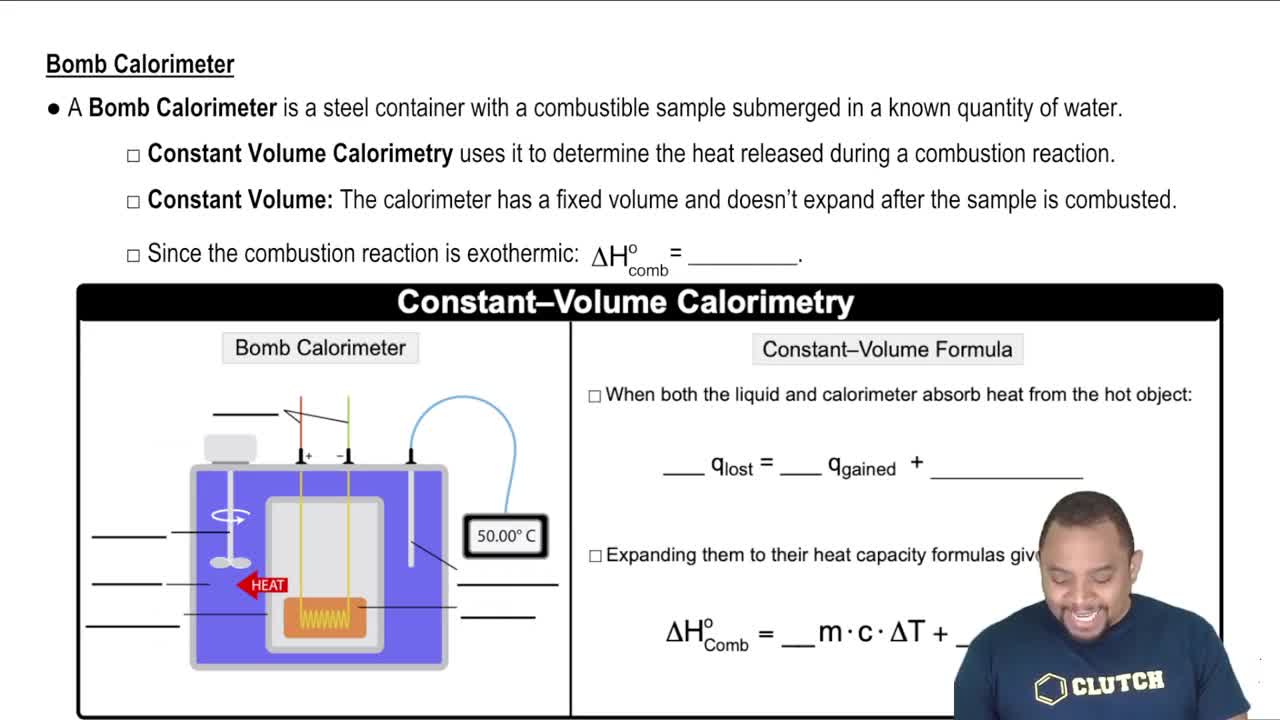(c) During winter, the temperature of the Arctic region can drop below -50 °C, what is the temperature in degree Fahrenheit and in Kelvin? (d) The sublimation temperature of dry ice is -78.5 °C. Convert this temperature to degree Fahrenheit and Kelvin. (e) Ethanol boils at 351 K. Convert this temperature to degree Fahrenheit and degree Celsius.
(a) What is the mass of a silver cube whose edges measure 2.00 cm each at 25 _x001F_C? The density of silver is 10.49 g/cm3 at 25 _x001F_C. (b) The density of aluminum is 2.70 g/cm3 at 25 _x001F_C. What is the weight of the aluminum foil with an area of 0.5 m2 and a thickness of 0.5 mm?
 Verified step by step guidance
Verified step by step guidanceKey Concepts
Density

Volume Calculation

Weight Calculation

(a) A sample of tetrachloroethylene, a liquid used in dry cleaning that is being phased out because of its potential to cause cancer, has a mass of 40.55 g and a volume of 25.0 mL at 25 °C. What is its density at this temperature? Will tetrachloroethylene float on water? (Materials that are less dense than water will float.)
(b) Carbon dioxide (CO2) is a gas at room temperature and pressure. However, carbon dioxide can be put under pressure to become a 'supercritical fluid' that is a much safer dry-cleaning agent than tetrachloroethylene. At a certain pressure, the density of supercritical CO2 is 0.469 g/cm3. What is the mass of a 25.0-mL sample of supercritical CO2 at this pressure?
(a) To identify a liquid substance, a student determined its density. Using a graduated cylinder, she measured out a 45-mL sample of the substance. She then measured the mass of the sample, finding that it weighed 38.5 g. She knew that the substance had to be either isopropyl alcohol 1density 0.785 g/mL2 or toluene (density 0.866 g/mL). What are the calculated density and the probable identity of the substance?
(b) An experiment requires 45.0 g of ethylene glycol, a liquid whose density is 1.114 g/mL. Rather than weigh the sample on a balance, a chemist chooses to dispense the liquid using a graduated cylinder. What volume of the liquid should he use?
(c) Is a graduated cylinder such as that shown in Figure 1.21 likely to afford the accuracy of measurement needed?
